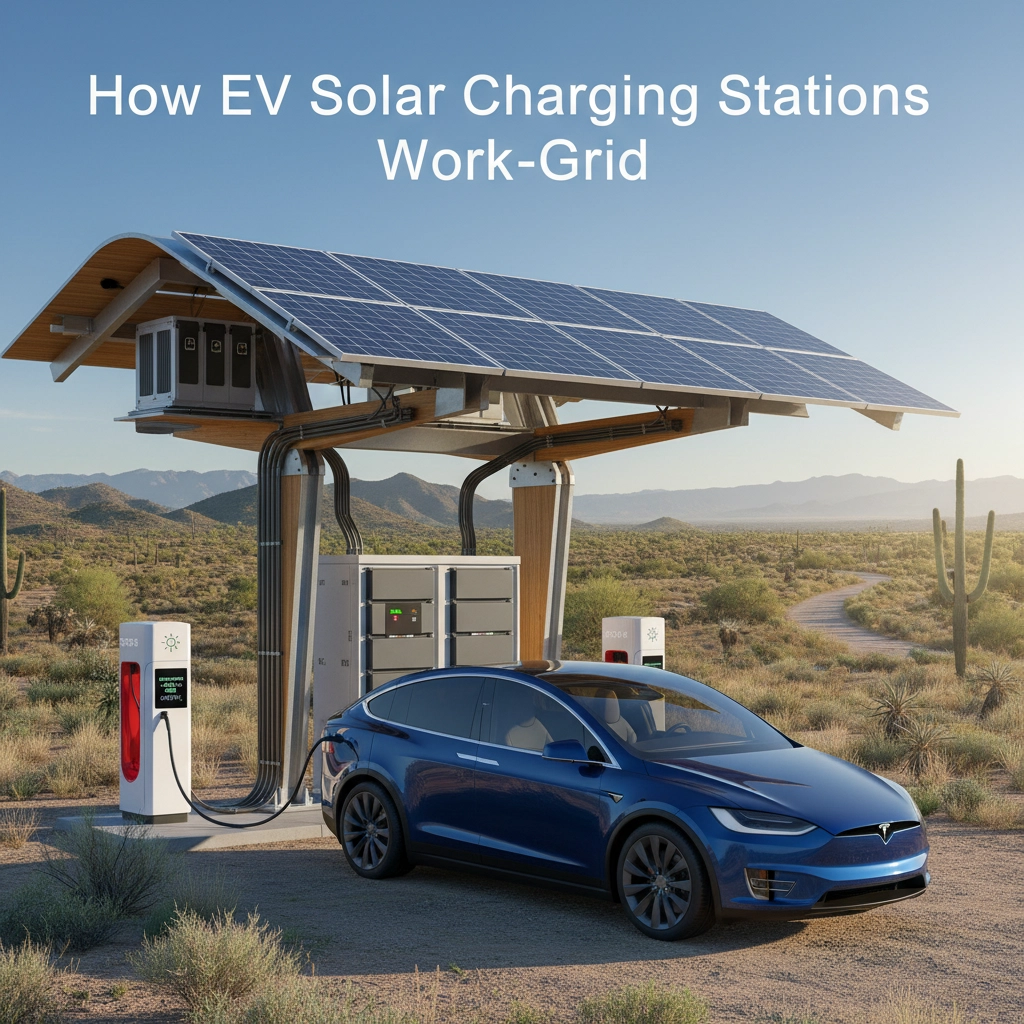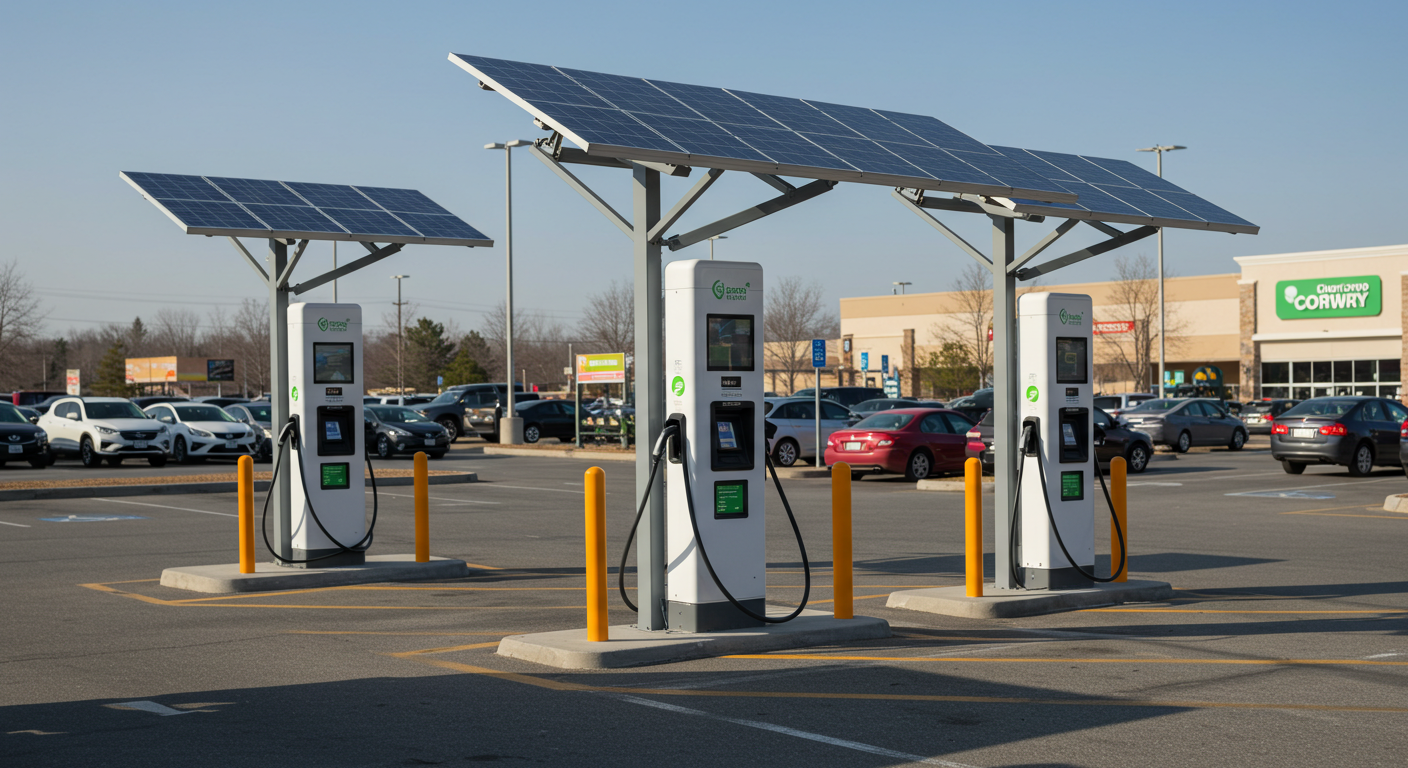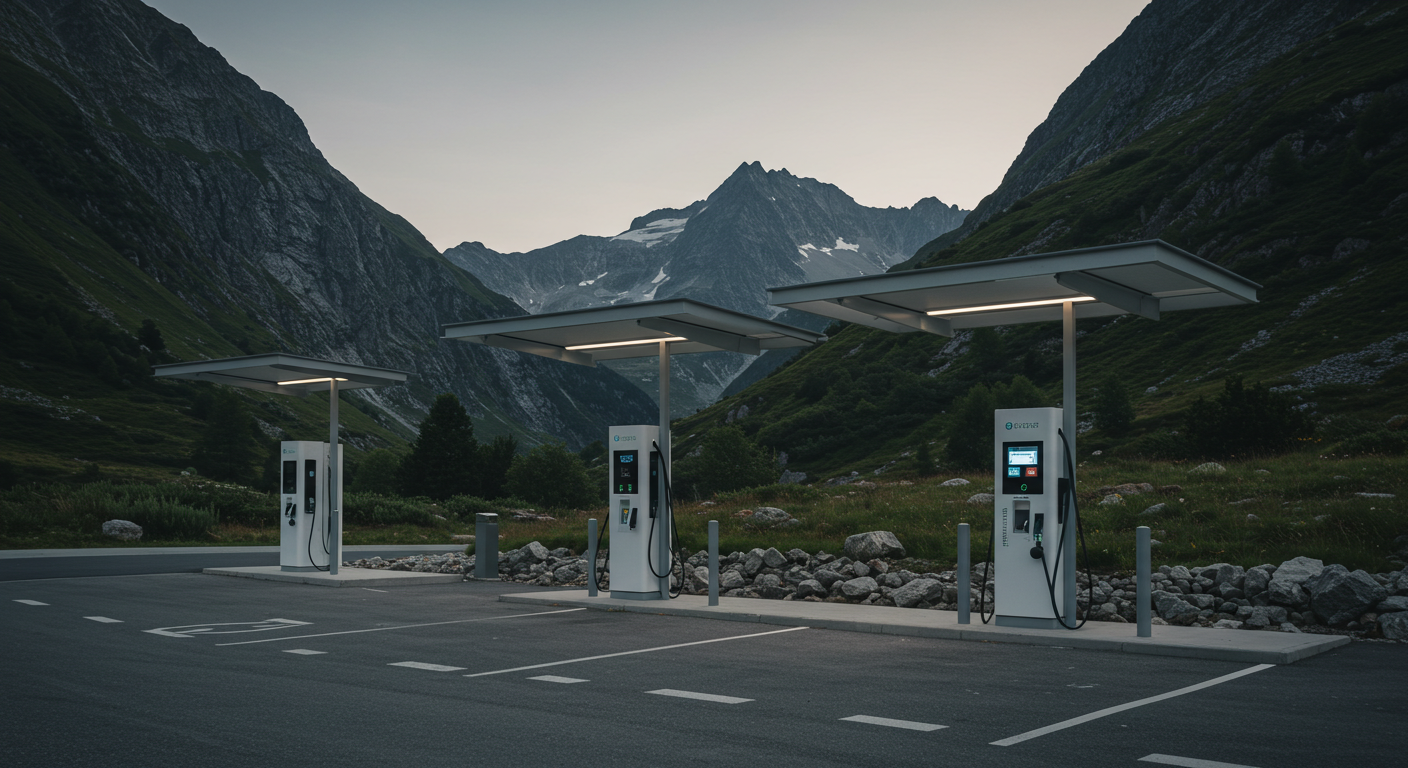Your municipality or postal service is looking at electric vehicles, but you're worried about charging infrastructure in remote areas. Off-grid EV solar charging stations solve this problem by creating completely self-contained power plants that charge electric vehicles without any connection to the utility grid.
These systems represent a game-changer for government fleets operating in rural areas, disaster zones, or locations where grid power is unreliable or expensive to install.
Understanding the Core Components
Solar Panel Arrays Generate Your Power
The foundation of your off-grid charging station starts with solar panels that convert sunlight directly into electricity. You'll typically need high-efficiency photovoltaic cells with conversion rates exceeding 26% to capture maximum energy from available sunlight.
For most municipal applications, your system will require a 5-6 kW solar array capacity that generates 25-30 kWh daily. This output provides sufficient power for charging smaller fleet vehicles like postal delivery trucks or municipal maintenance vehicles.

Battery Storage Systems Keep You Running
Energy storage becomes absolutely critical for your off-grid operations because it allows vehicle charging during nighttime hours or cloudy conditions. Your system needs a minimum battery capacity of 10 kWh for standard fleet vehicles, though 15-20 kWh provides greater flexibility and extends battery life.
Modern systems often incorporate advanced lithium-ion technology, including repurposed second-life EV battery packs that reduce your costs while maintaining performance. This approach aligns perfectly with sustainability goals while keeping your project budget manageable.
Power Electronics Handle the Conversion
Your system includes sophisticated power conditioning equipment that converts direct current from solar panels and batteries into alternating current required by EV chargers. A charge controller manages electricity flow from solar panels to batteries, ensuring optimal charging and preventing costly overcharging damage.
How the Charging Process Actually Works
Energy Capture Happens During Daylight
During daylight hours, your solar panels generate electricity that flows through the charge controller. This controller intelligently directs power either directly to charge a vehicle or stores it in your battery system based on immediate needs and battery charge levels.
The system optimizes energy distribution automatically, ensuring you maximize every bit of solar energy captured throughout the day.
Storage and Distribution Work Around the Clock
When your solar generation exceeds immediate charging demands, excess energy charges the battery storage system for later use. During periods of low or no solar generation, your batteries supply stored energy through inverters to power the EV charging equipment.
Advanced systems incorporate AI-driven energy management software that optimizes charging schedules and energy allocation based on your fleet's usage patterns.

Vehicle Charging Integrates Seamlessly
Your charging station operates as a standalone unit within the off-grid setup, providing standard charging interfaces that work with all electric vehicles in your fleet. Charging power typically ranges from 7-22 kW for commercial installations, with some systems capable of supporting faster charging sessions if you properly size your solar array.
Calculating Your Power Requirements
Size Your System Based on Fleet Needs
Your fleet vehicles typically have battery capacities ranging from 30-100 kWh, with larger batteries requiring longer charging times or higher-power charging systems. Most solar panels produce between 400-600 watts each, requiring multiple panels to achieve adequate charging capacity for your specific needs.
Calculate your daily energy requirements by considering how many vehicles you need to charge and their typical usage patterns. Postal routes and municipal operations often have predictable schedules that make sizing calculations straightforward.
Optimize Charging Speed for Operations
Several factors influence charging speed in your off-grid system. Installing additional solar panels increases energy output and reduces charging time, while higher-power chargers like 22 kW AC units can significantly decrease charging duration if your solar system supports the load.
Well-managed battery storage allows immediate use of solar energy even during intermittent sunlight conditions, ensuring your vehicles stay charged regardless of weather patterns.
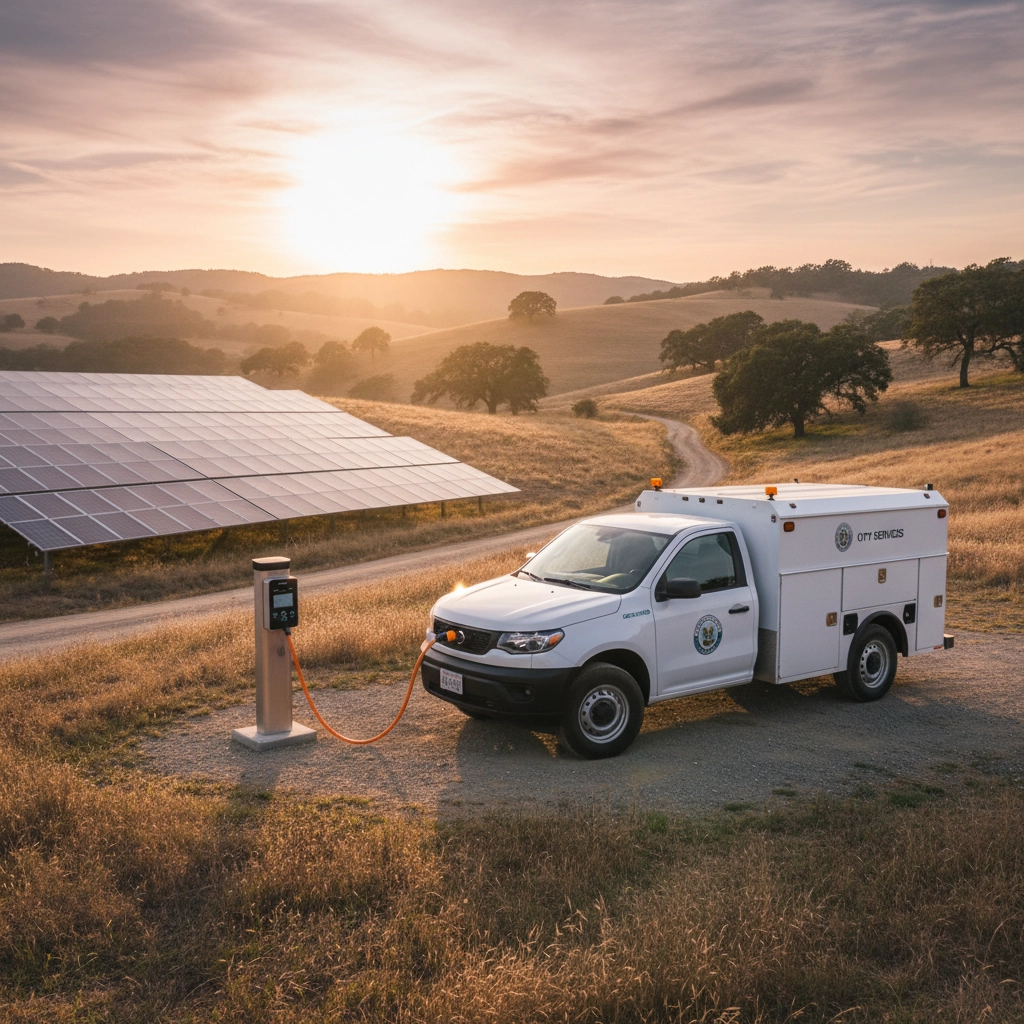
Maximizing System Efficiency
Minimize Energy Losses Through Design
Not all generated solar energy reaches your vehicle batteries due to various system losses. Charger efficiency varies significantly between low-quality and high-performance units, with inferior chargers losing more energy during the conversion process.
Battery efficiency also plays a crucial role, as older or degraded batteries waste more energy during charging cycles. Choose quality components upfront to maximize your system's long-term performance and return on investment.
Optimize Your Installation Layout
Well-designed off-grid systems minimize energy losses through proper component sizing, optimal solar panel orientation, and strategic system layout. Advanced systems may incorporate hybrid generation combining solar and wind power to increase reliability, particularly in challenging environments.
Consider your local climate patterns when designing your system. Areas with consistent wind patterns might benefit from hybrid solar-wind systems that provide more reliable power generation throughout the year.
Why This Technology Benefits Your Organization
Expand Service to Remote Areas
Off-grid EV charging stations provide essential infrastructure for rural and remote areas where main-grid expansion lags behind your electrification goals. This technology eliminates dependence on grid connections, accelerating site deployment by avoiding lengthy grid-interconnection delays.
Your organization can serve previously underserved communities while meeting sustainability mandates and reducing long-term operational costs.
Maintain Operations During Outages
These systems deliver crucial resilience benefits for critical fleet operations, allowing your logistics and public safety operations to maintain vehicle readiness during utility outages. This reliability becomes essential for emergency response and essential services that communities depend on.
Reduce Infrastructure Costs
Mobile or containerized units offer flexible solutions for temporary operations that frequently relocate. Construction sites, remote maintenance operations, and disaster relief scenarios benefit from charging infrastructure that moves with your operations.
You avoid the high costs of extending electrical service to remote locations while gaining the flexibility to relocate charging infrastructure as your needs change.
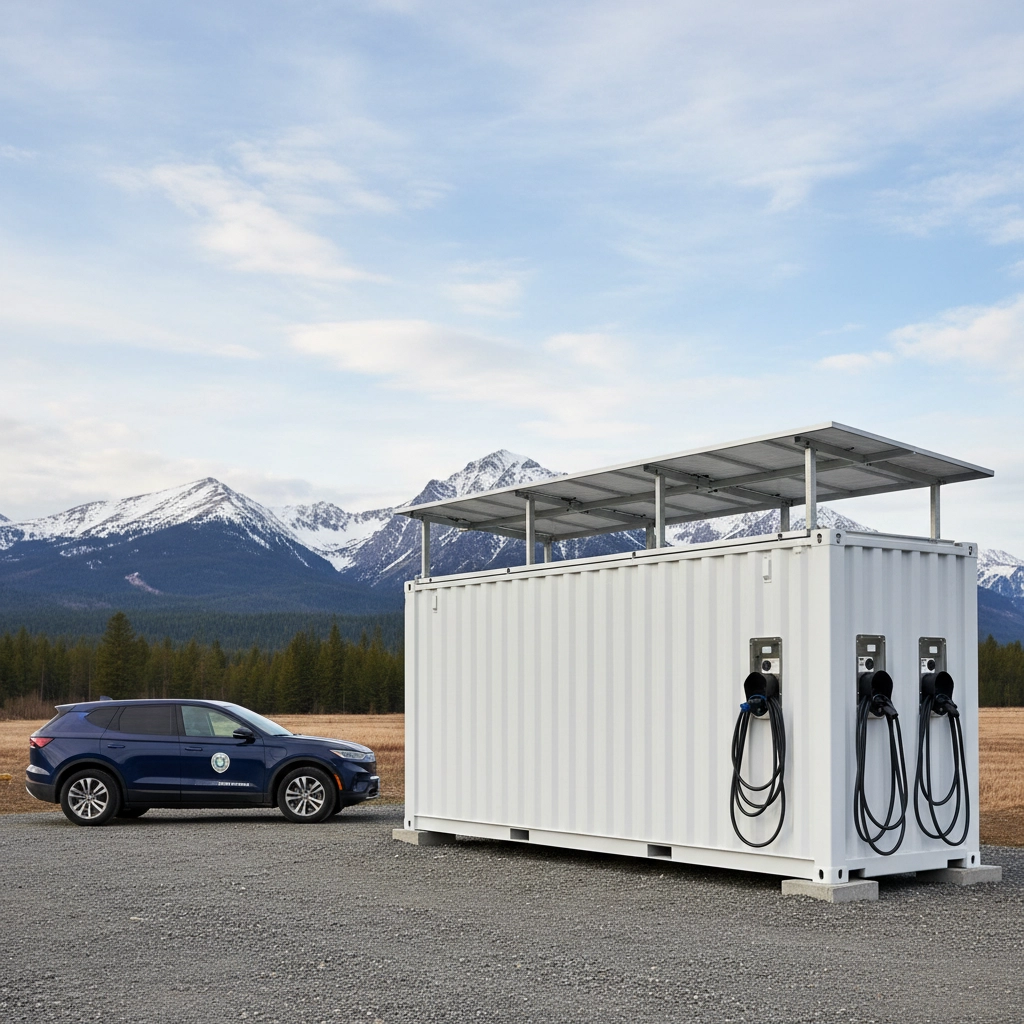
Planning Your Implementation
Start with a Pilot Program
Begin your off-grid charging initiative with a small pilot installation that serves a specific route or operation. This approach allows you to understand system performance, maintenance requirements, and operational impacts before expanding to larger deployments.
Document charging patterns, energy generation data, and maintenance needs to refine your approach for future installations.
Consider Seasonal Variations
Plan your system sizing to account for seasonal variations in solar energy generation. Winter months typically require larger battery storage capacity to maintain reliable charging capability during shorter daylight hours and reduced solar intensity.
Your system should handle the worst-case scenario to ensure year-round reliability for critical operations.
Moving Forward with Confidence
Off-grid EV solar charging stations transform how your organization approaches fleet electrification in challenging locations. These systems provide reliable, sustainable charging infrastructure that operates independently of utility grid limitations.
The technology removes barriers to electric vehicle adoption while supporting your sustainability goals and operational requirements. Your organization gains energy independence, reduces long-term costs, and demonstrates environmental leadership through innovative infrastructure solutions.
Ready to explore off-grid charging solutions for your fleet? Contact our team to discuss your specific requirements and develop a customized approach that meets your operational needs and budget constraints.
